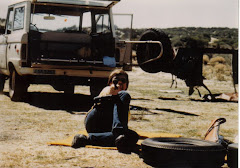Mechanix Illustrated, Popular Science, et al
We didn't really have Playboy magazine in my town. There was one Novelty Store down by the railroad station that carried it, but if the clerk even saw one of my tender age moving toward that end of the magazine rack, it was "You 21? Lemme see your driver's license." For a long time, I didn't even know what I wasn't allowed to see.
Well, I might have been trying to sidle over to the adult rack from time to time, and I might've even succeeded a time or two, truth be told, but that wasn't why I hung out there. I couldn't afford to buy all the magazines I wanted, but if I bought one occasionally, he let me do some extended browsing.
There was Rod & Custom, Hot Rod, Car Craft and a few other custom car mags, most of which no longer exist. As a fledgeling car nut, these magazines were what life is for. I also looked over the SciFi pulps, as an avid Robert Heinlein reader.
Which finally leads me to the subject at hand. To see the products graphically that were described by the '50's SciFi writers in print, one read the science magazines.
Having read Heinlein's short story, "The Roads Must Roll," it was wonderful to see a fully illustrated Popular Science article on moving sidewalks. Those magazines employed some wonderful artists with terrific imaginations to come up with believable pictures of yet-to-be realized technolgy. Some time after I read his "Red Planet," one of these magazines had a fully illustrated article on what a base on Mars might look like.
One article from those years that really interested me followed a SciFi story I read in which included a verbal description of traffic problems in a city of the future in which people commuted in flying cars. Coincidentally, while this story was fresh in my mind, Mechanix Illustrated and Popular Mechanics had articles on car-plane convertibles--that is, cars onto which flight surfaces could be attached for flying, or removed for driving on the streets. This was in the mid-fifties!
To be sure, these were primitive attempts whose practicality was highly suspect, and which never did make it into the market, but it was a start. I was stoked!
Now, the bad news. The feds had a Federal Aviation Agency (FAA) and a Civil Aeronautics Board (CAB). Stories came out on (black and white) TV news and in newspapers about how it'd be impossible to allow the public at large to fly. It'd be a daily massacre, as these flying cars came crashing down on homes and commercial buildings.
Thus endeth the whole idea of aerocommuting. It just hasn't come up again. We're too stupid.
Today's computer technology can be directed toward automated air traffic control in urban situations, and aeronautic technology could have developed aircars that could fly in corridors over the cities if those early inventors had been able to improve their aircars and refine them over a period of these past few decades, but a declaration by short-sighted bureaucrats squelched the industry before it was even born.
Meanwhile, JFK's space program is stalled--I'll state that it's for two reasons: First, the federal government has spread itself into a host of areas for which there is no Constitutional mandate. Spreading itself too thin, they do nothing very well, not even those things that are within their Constitutional prerogatives. And second, space should've been handed over to the private sector immediately. By keeping NASA in charge, and simultaneously under the thumb of the military, the private sector was frozen out completely (except to manufacture components to the order of NASA and the Air Force). Private firms might not have acted as quickly, until they could see the possibility of profit, but once started, they'd act more quickly and cost-effectively than NASA by orders of magnitude.
I'm angry.
When I was twelve, I assumed that in my lifetime, I'd be flying to work daily and to the Grand Canyon for a vacation. I assumed that I'd have been to the moon a time or two and maybe even to Mars. I assumed that shaving would be a thing of the past and that clothing would be worn once and thrown away. I assumed that videophones would be the norm and that television would be truly three-dimensional. I could go on and on.
In the period between about 1880 and 1929, all manner of men and women were inventing things in their spare bedrooms and carriage houses. Inventions were hitting the market almost hourly. Some were wonderful, many were no good. The market made the decision--not the government.
We still have improving technology today, but it drags in many areas of endeavor. In others (electronics), improvements still come along at a pretty good pace. But relatively few individuals are coming up with new things in their garages any more. With the tax and regulation restrictions we have to suffer, it's a wonder anything gets done.
They've killed Freedom! Those bastards!
Warm regards,
Col. Hogan
Stalag California
Subscribe to:
Post Comments (Atom)






2 comments:
I wanted to fly, years ago, but it reapidly got too complicated and expensive. I presume that was by design, since the feds don't want too many people to be able to handle aircraft.
When I was young, a pilot's license was actually fairly easy to get.
When I was a kid Thriftimart had the Playboys stacked up at the front of the store right next to the big bags of dog food (between the econo bags of BBQ briquests and the floor scrubbers). You could sneak a peek if you were sly because the clerks were a) unionized and b) kind of busy.
Now somebody explain to me why I'm working at my computer on a Sunday afternoon whilst the old lady and the kiddos are soaking up sun at the beach.
Post a Comment